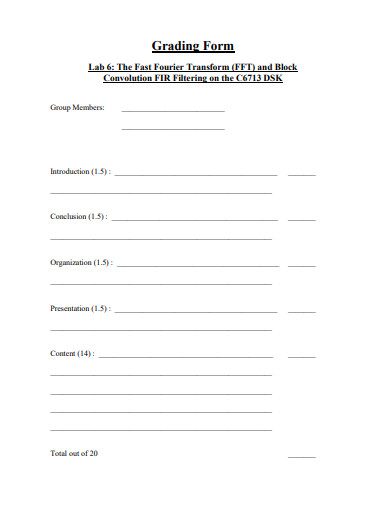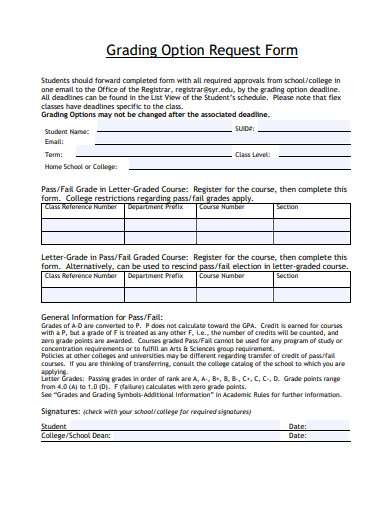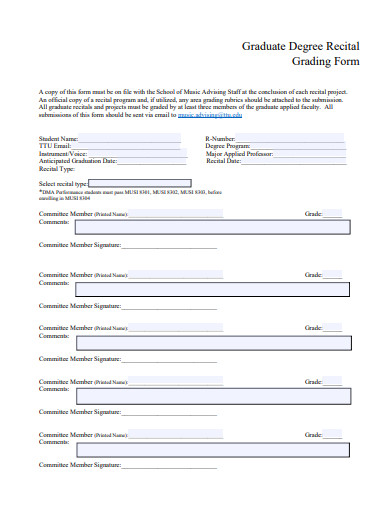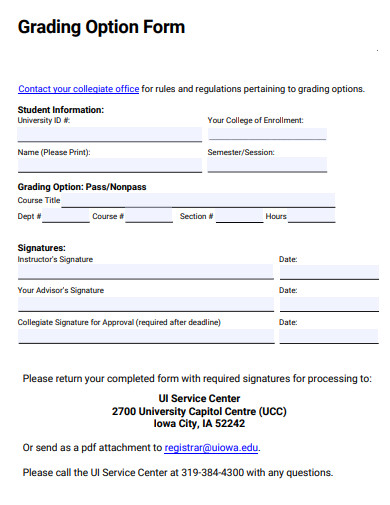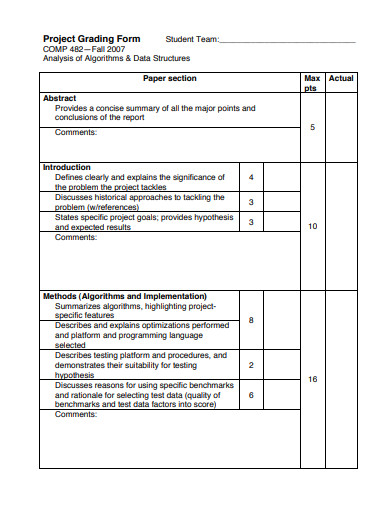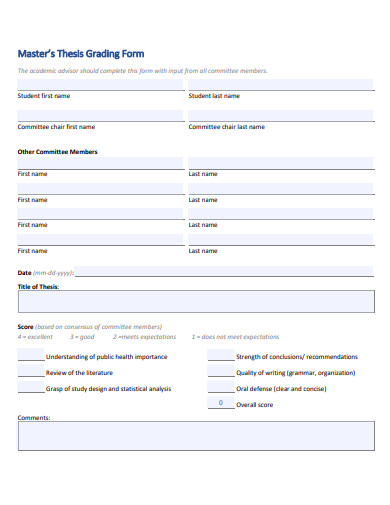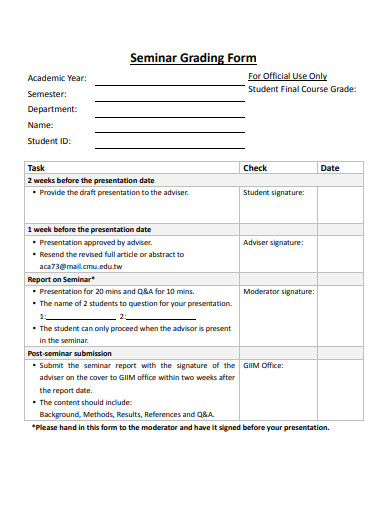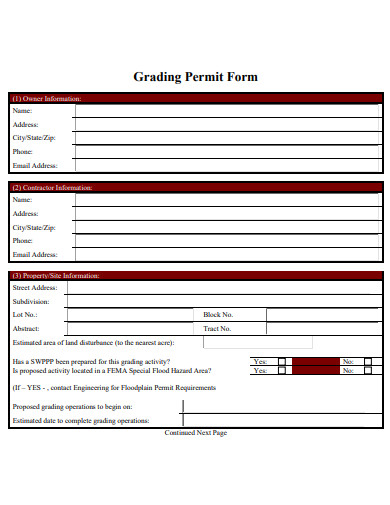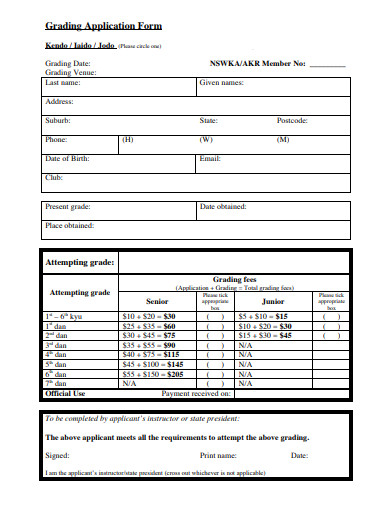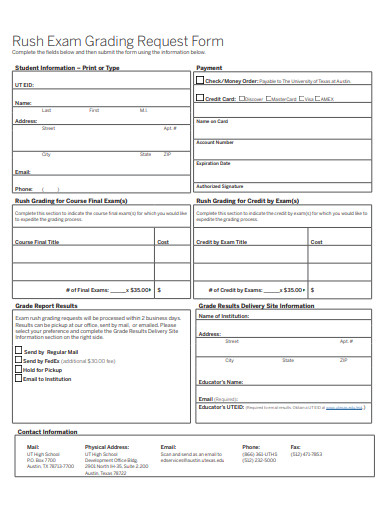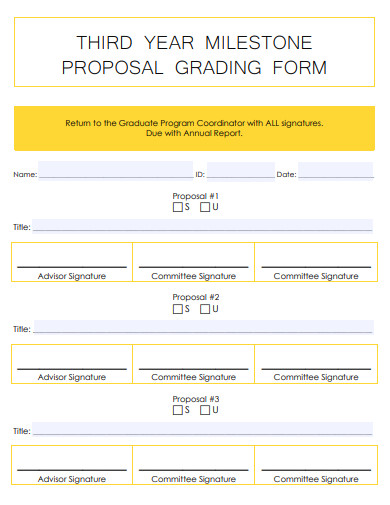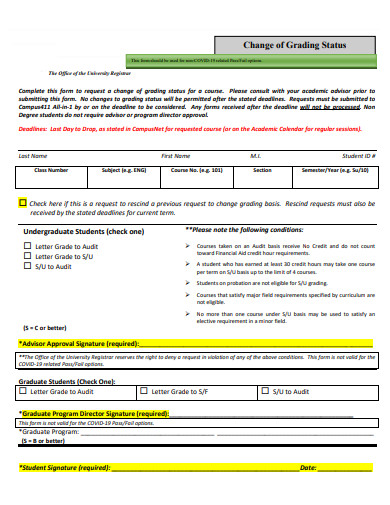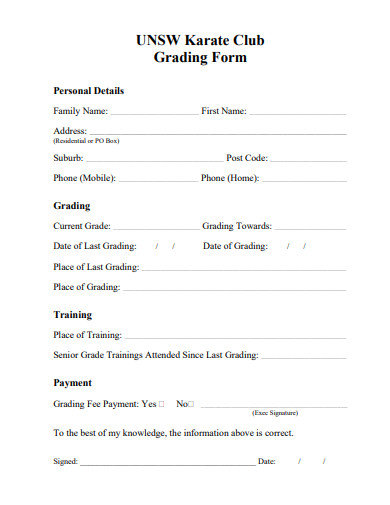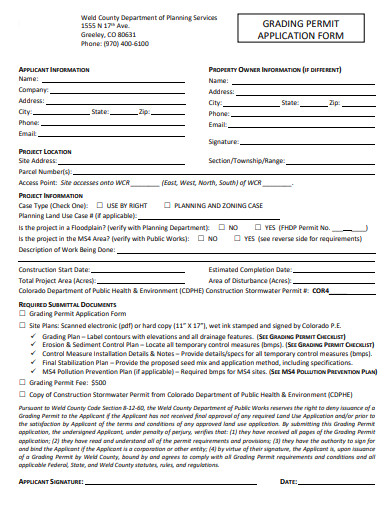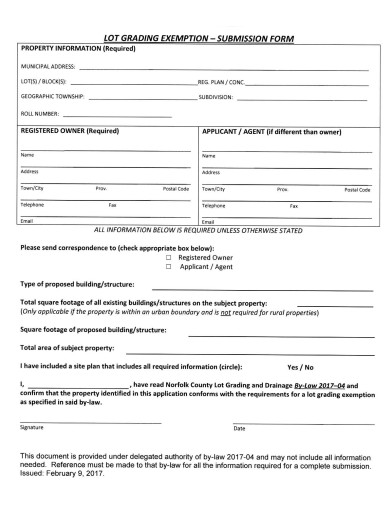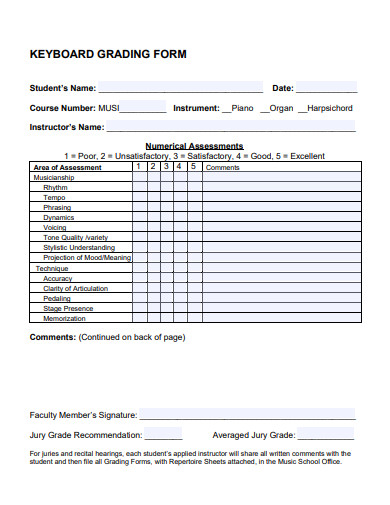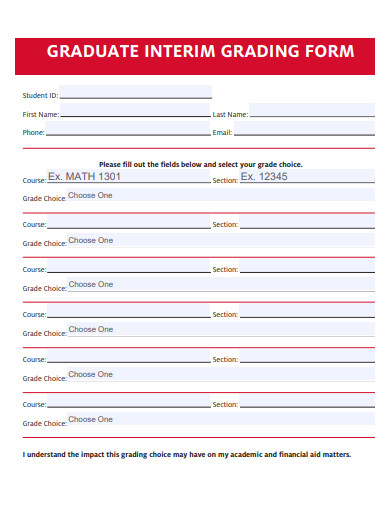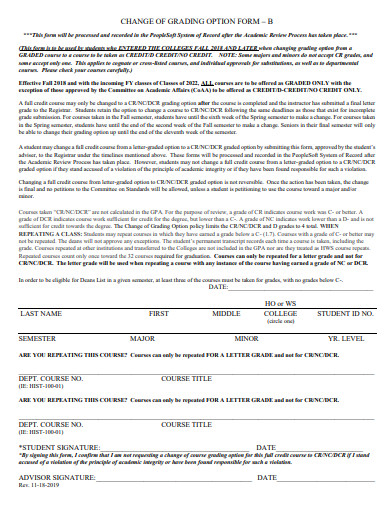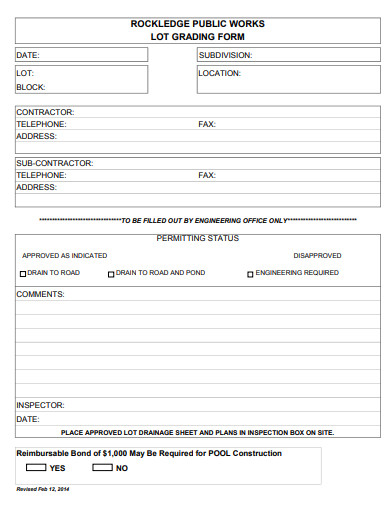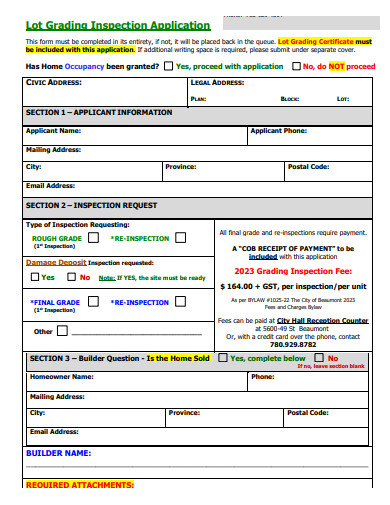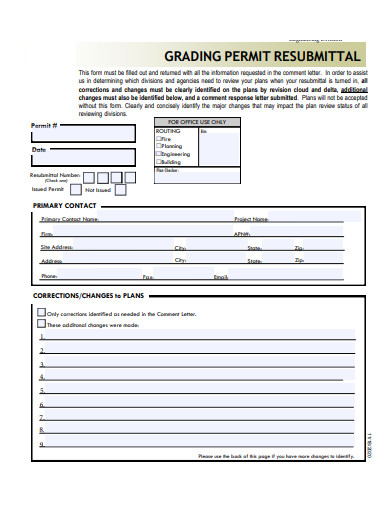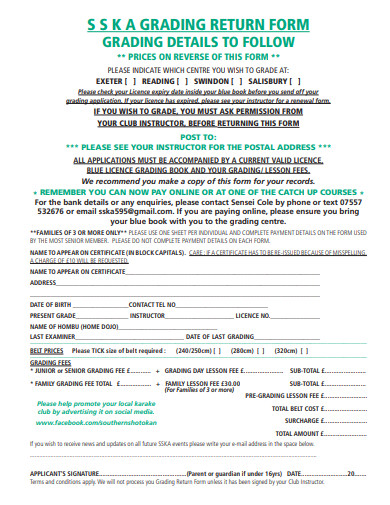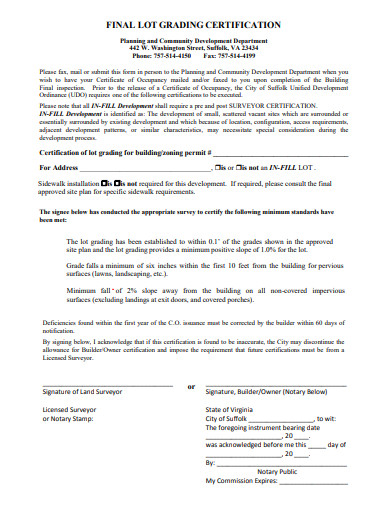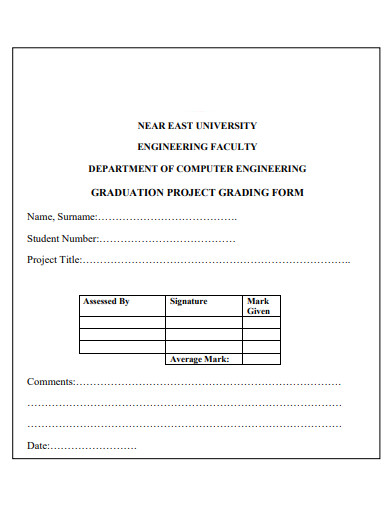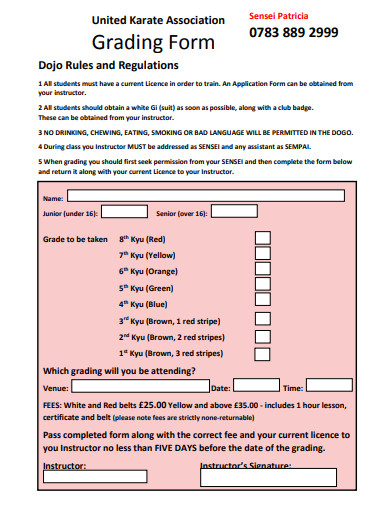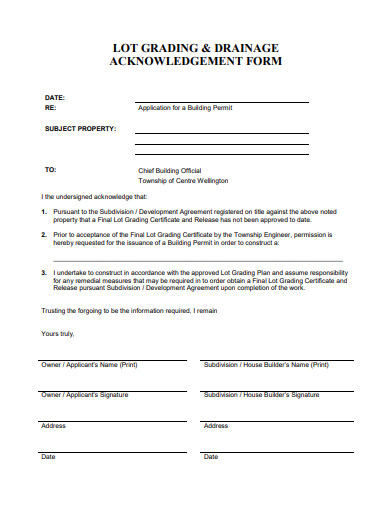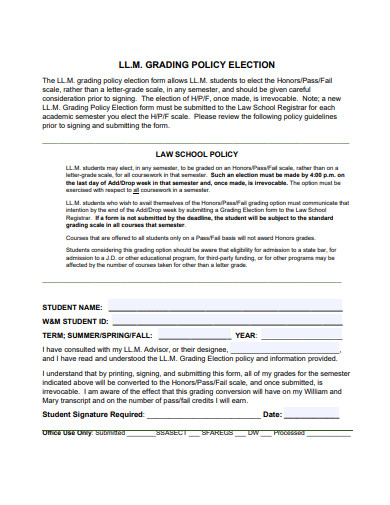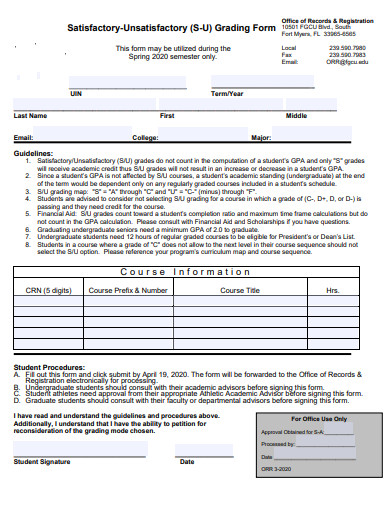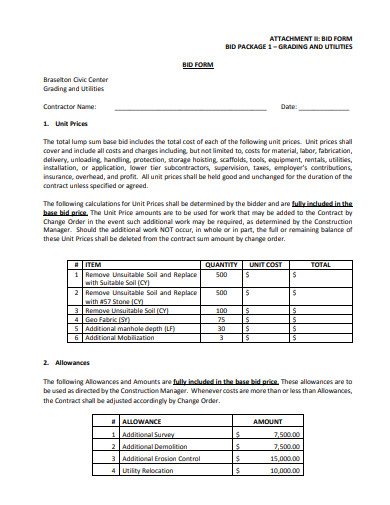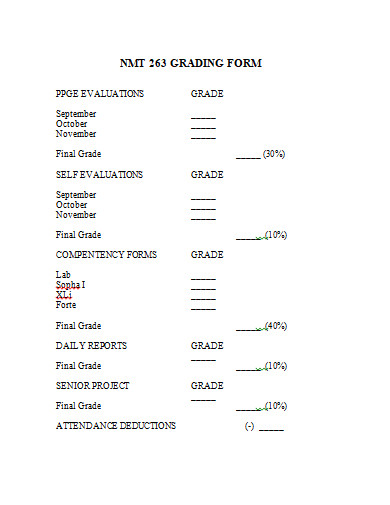When educators need a document for a structured and standardized evaluation of their students’ work like assignments, projects, exams, presentations, and other types of educational assessments, they utilize a grading form. This form contains clear criteria and guidelines that teachers must follow when evaluating the work performance of their students, ensuring objectivity and consistency. During these assessments, teachers can also use observation notes, anecdotal records, running records, summative assessment forms, performance evaluation forms, self-assessment forms, survey forms and questionnaires, and digital assessment forms.
33+ Grading Form Samples
1. Grading Form Template
2. Grading Option Request Form Template
3. Graduate Degree Recital Grading Form Template
4. Grading Option Form Template
5. Project Grading Form Template
6. Masters Thesis Grading Form Template
7. Seminar Grading Form Template
8. Grading Permit Form Template
9. Grading Application Form Template
10. Rush Exam Grading Request Form Template
11. Presentation Grading Form Template
12. Proposal Grading Form Template
13. Change of Grading Status Form Template
14. Karate Club Grading Form Template
15. Grading Examination Form Template
16. Grading Permit Application Form Template
17. Recital Grading Form Template
18. Grading Exemption Submission Form Template
19. Book Review Grading Form Template
20. Keyboard Grading Form Template
21. Graduate Interim Grading Form Template
22. Change of Grading Option Form Template
23. Grading Form Example
24. Lot Grading Inspection Application Form Template
25. Grading Permit Resubmittal Form Template
26. Grading Return Form Template
27. Final Lot Grading Certification Form Template
28. Graduation Project Grading Form Template
29. Basic Grading Form Template
30. Lot Grading and Drainage Acknowledgement Form Template
31. Grading Policy Election Form Template
32. Printable Grading Form Template
33. Grading Bid Form Template
34. Grading Form in DOC
What is a Grading Form?
Grading forms are standardized documents that serve as a performance evaluation tool that is used in educational settings to evaluate and assess student performance, outlining the criteria, rubrics, and standards which shows how the evaluation process of assignments, projects, presentations, and test will look. These forms also give consistent and transparent methods which enable instructors to assign grades efficiently and accurately, ensuring that the evaluation is fair and objective. Teachers can also use other assessment tools such as feedback worksheets, peer review forms, assessment schedule templates, portfolio guidelines, and individual learning plans.
How to Create a Grading Form
To ensure its consistency and effectiveness, grading forms include categories such as content, organization, creativity, and compliance to guidelines, assisting educators in communicating their expectations to their students and helping them understand how their performance will be assessed. Grading forms also offer transparency to both the student and the instructor which also promotes a clear comprehension of the evaluation process.
Step 1: Provide the Definition of the Assessment Criteria
Determine the key elements or areas you want to evaluate in your student’s work which can include their organization, research, creativity, content, and adherence to rules and guidelines. Provide a clear articulation of each criterion by breaking it down into specific components that can contribute to a comprehensive assessment.
Step 2: Create Your Scoring System
Choose the method on how you will assign grades or scores to each criterion. You can consider using numerical scales, letter graders, or descriptive labels. However, you also have to ensure that the scoring system you will be using aligns with the overall grading structure utilized in your institution or course.
Step 3: Provide a Detailed Description
Provide detailed descriptions for every performance level in each criterion. The descriptors should provide an outline of what constitutes exceptional, proficient, basic, and below-basic performance. These will enhance transparency and consistency in your grading process.
Step 4: Design the Layout Format of the Form
Create the layout design of the grading form in a logical manner by categorizing the criteria together and providing enough space for comments. Provide the assignment title, name of the student, date, and other specific instructions then proofread to check the form’s clarity and accuracy before you finalize the grading form.
FAQs
What is the basic format of grading forms?
The basic format used when creating a grading form includes the header section, criteria and scoring, descriptors, comments or feedback, total score or grade, additional information, signature and date, rubric or guidelines, and instructions for improvement.
What are the different types of grading forms?
The different types of grading forms are analytic grading forms, holistic grading forms, checklist grading forms, rubric grading forms, self-assessment grading forms, numeric grading forms, descriptive grading forms, narrative grading forms, and portfolio assessment forms.
What are the advantages of utilizing grading forms?
With grading forms, both educators and students can observe transparency and consistency, efficiency and time-savings, objective and fair evaluation, focused feedback, support for learning objectives, promotion of self-reflection, enhanced communication, feedback for improvement, consolidation for data analysis, and reduction of grade disputes.
Grading forms enable teachers or educators to communicate their expectations of student performance, making them understand how the evaluation process of their work will be done. This form also promotes a balanced and uniform grading system or process that supports effective learning outcomes. A grading form is commonly utilized in educational settings, enabling educators to effectively and efficiently assess and rate the quality of their student’s assignments, assessments, or projects.
Related Posts
Sample Employee Declaration Forms
Sample Release of Liability Forms
Sample Training Feedback Forms
Sample Sworn Affidavit Forms
Vehicle Inspection Forms Samples & Templates
Sample Employee Advance Forms
Sample Child Travel Consent Forms
Sample Testimonial Request Forms
Sample Employee Details Forms
Sample Divorce Forms
Sample Attestation Forms
Employee Performance Appraisal Form Templates
FREE 9+ Sample Presentation Evaluation Forms in MS Word
FREE 10+ School Admission Form Samples & Templates in MS Word | PDF
FREE 30+ Patient Consent Form Samples in PDF | MS Word

